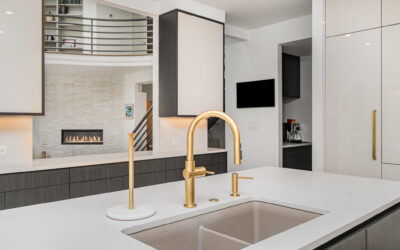A Note From Heather
Now that the weather is getting warmer, it is a good time to focus on interior projects. Early summer is an especially good time to spice up your house with some fresh colors. One advantage of painting during the summer is that the summer light will project a true hue of the color on your wall. Just keep in mind that if you paint your interior walls during the summer, opening the windows will bring in the humidity and your paint will take longer to dry. Luckily, many paint brands today offer low-VOC, fast drying and odorless paints to help combat this issue!
Have fun playing at the pool or at the beach – but when it comes to home projects, beat the heat and bring them indoors!
Happy Summer!
Heather
Choosing the Right Paint Colors for Your Home
If you are considering painting your house, one decision that you will have to make is the color to use. Below, we are outlining our process for choosing the right paint colors for your home.
1. Determine Where You Want To Paint
Are you painting exterior or interior walls? Before you choose paint, make sure your material selections are finalized first. Your paint color may change over time but your tile and countertops, for instance, will be around for much longer.
 If you are painting outside, believe us when we tell you that the hue will always be more blue than you expect because it will reflect the sky. Choose a color with more beige to offset that effect to save yourself from having to repaint. If you have brick exterior, pay special attention to the tones of the brick. Are they more red, purple or brown? Choose a color for your front door or shutters that compliments those tones.
If you are painting outside, believe us when we tell you that the hue will always be more blue than you expect because it will reflect the sky. Choose a color with more beige to offset that effect to save yourself from having to repaint. If you have brick exterior, pay special attention to the tones of the brick. Are they more red, purple or brown? Choose a color for your front door or shutters that compliments those tones.
 For interior rooms, consider what effect you want the paint color to have. If you want to show off as much natural light as possible, go for neutral colors such as cream or off-white or even light gray. Do you want to highlight a specific piece of painted furniture or rug pattern? Do you want to create an intimate feel in the room? All of these goals will determine the best color of paint for your home.
For interior rooms, consider what effect you want the paint color to have. If you want to show off as much natural light as possible, go for neutral colors such as cream or off-white or even light gray. Do you want to highlight a specific piece of painted furniture or rug pattern? Do you want to create an intimate feel in the room? All of these goals will determine the best color of paint for your home.
2. Choose Colors
Paint can be a really personal choice because it can showcase your personality or even be used to allow certain furniture or decor in your home to pop. Remember that paint will change shades when you get it home as opposed to how it looked in the store – so, start with a sample.
 Some people will gravitate toward bolder colors while others will prefer softer, neutral hues. If you want to use a bold color, we suggest using it on a small space such as a wall in your office, a powder room, a mudroom, or a long wall in your entryway. Ceilings should use lighter colors with a gray tint, rather than a stark white.
Some people will gravitate toward bolder colors while others will prefer softer, neutral hues. If you want to use a bold color, we suggest using it on a small space such as a wall in your office, a powder room, a mudroom, or a long wall in your entryway. Ceilings should use lighter colors with a gray tint, rather than a stark white.
Try to stay away from trends when choosing colors. While they are fun, they tend to go out of style faster, which creates more cost and work for you later.
Here are a few favorite colors that our clients have preferred this year. They are …
 Trim and Cabinets:
Trim and Cabinets:
- Egret White: Sherwin Williams 7570
- Aesthetic White: Sherwin Williams 7035
- Urbane Bronze: Sherwin Williams 7048
Walls
 Intellectual Gray: Sherwin Williams 7045
Intellectual Gray: Sherwin Williams 7045- Agreeable Gray: Sherwin Williams 7029
- Sea Salt: Sherwin Williams 6204
- Edgecomb gray: Benjamin Moore HC 173
- Hale Navy: Benjamin Moore HC 154
Doors
- Sea Serpent: Sherwin Williams 7615 (also good for built ins or as an accent color)
- Kendall Charcoal: Benjamin Moore HC 166 (also good for railings and shutters)
3. Visit A Paint Shop
Most paint companies have color chips to help you pick colors based on your preference. Sherwin Williams includes a little cutout square in their chips so that you can overlay them on another color to make sure they compliment each other. When you are choosing the best paint colors for your home, be sure to lay them over your tile, countertops, and other large items. This will tell you whether you are pulling out the appropriate warm and cool tones from the material selections.
 4. Test The Color On Your Wall
4. Test The Color On Your Wall
Once you have narrowed your paint chips down to 2 or 3 colors, you should get a sample of the color and paint it on a cardboard or poster paper. Several home improvement stores also sell paintable sticker decal kits to test paints on your wall. Move this sample around to see how it looks on different walls. Leave the poster or sample up and look at it at different times of day. This is important because paints tend to look different throughout the day as the sun moves through your house. For instance, blues and grays tend to look more purple in Northern facing rooms. As you move the paint sample around the room, don’t forget to look at it next to your trim since that is likely the most neutral paint currently in the room. It can be distracting if you already have a color on the wall so putting it next to the trim can reset your eye a bit.
Ultimately – Have Fun!
Try not to overthink your paint selections. Painting should be a fun activity. Spend 2 to 3 weeks playing with the colors that you selected and then make a choice. Painting is the cheapest and easiest change you can make in your home. You can always repaint if you do not like the color! Remember that change is hard! Give the color that you chose time to grow on you.









